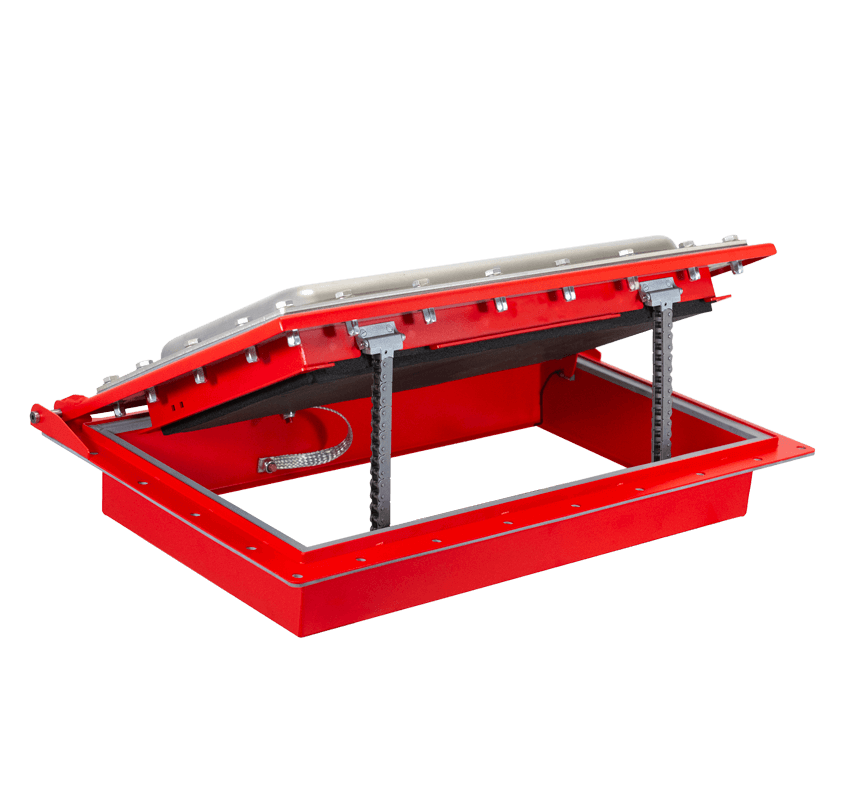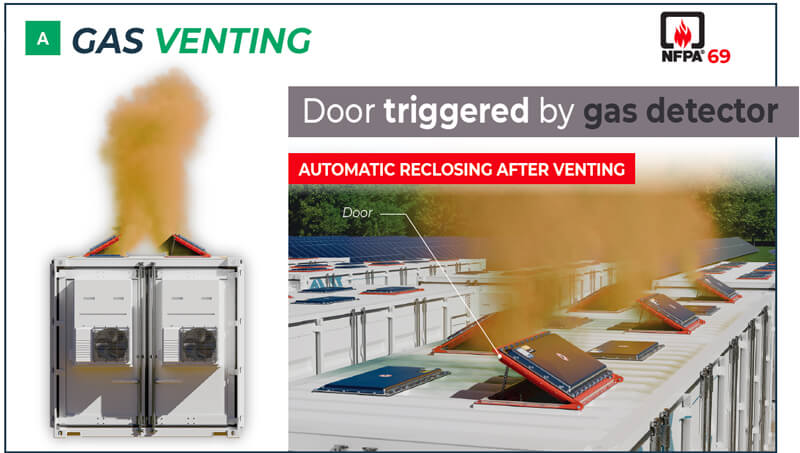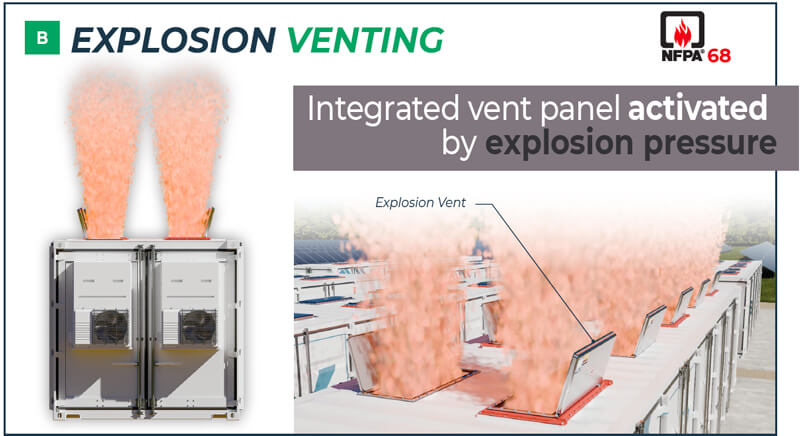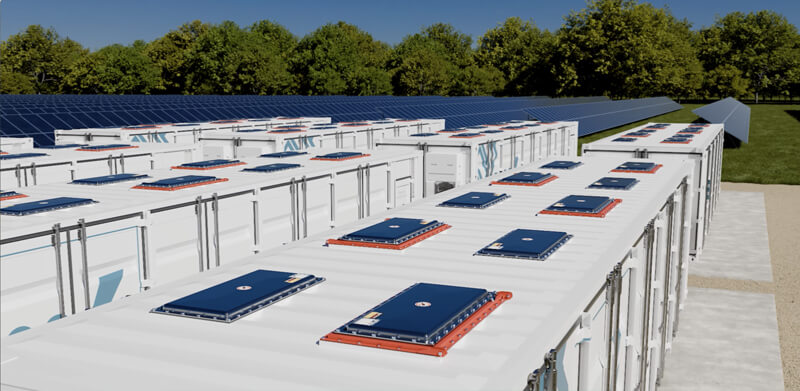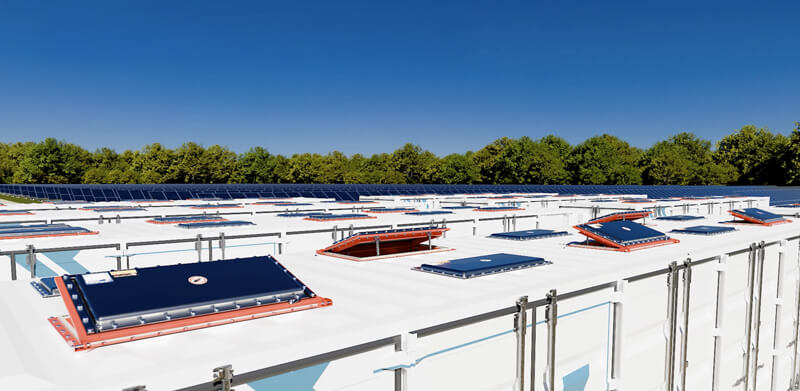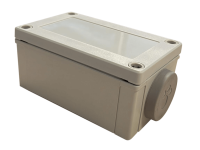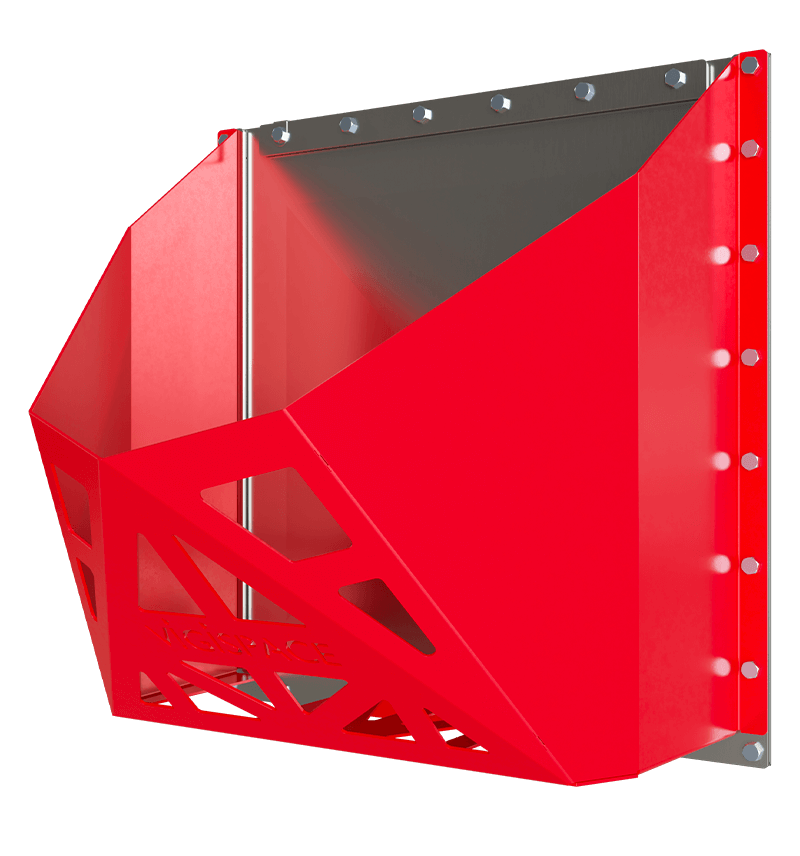APPLICATIONS
Fire protection systems installed within a BESS enclosure are insufficient on their own to prevent a thermal runaway. This has been extensively demonstrated through studies, tests, and reports.
It is imperative to both discharge the BESS of flammable gases when they are detected and to protect the enclosure and surrounding environment during an explosion.
The DUAL-VENT® is designed and engineered to meet both of these requirements in one system and is the only product on the market to address the requirements for NFPA 68 and NFPA 69.
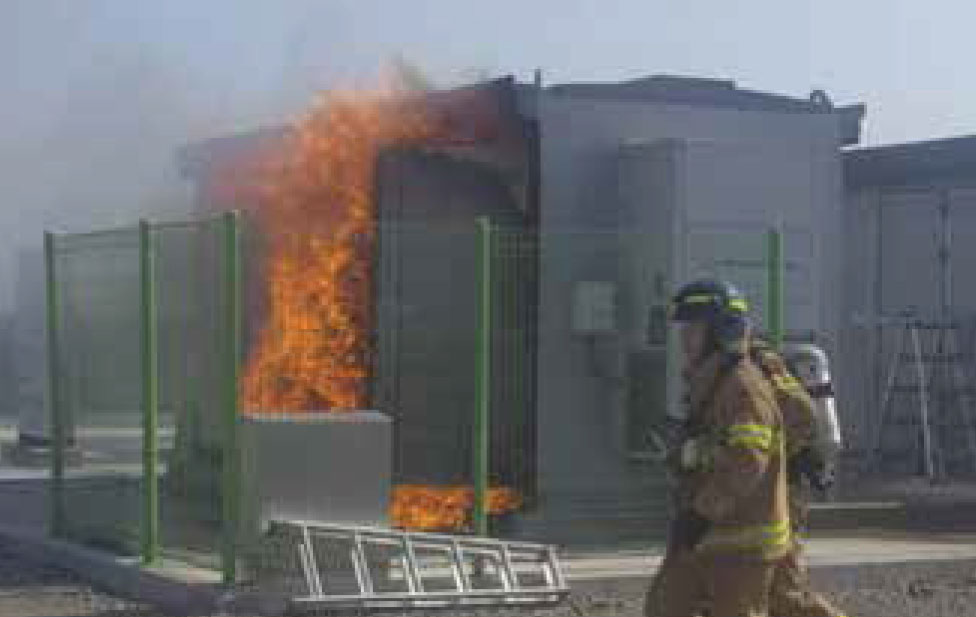
A. VENTING BY GAS DETECTION
(NFPA69)
During thermal runaway, a single defective battery cell can generate a large amount of dangerous gases. This can result in a severe uncontrolled fire or an explosion.
Combined with a monitoring system and detection system, the DUAL-VENT® quickly extracts hazardous gases from the enclosure, considerably reducing the risk of fire and explosion.
Once the monitoring system deems the enclosure safe, the DUAL-VENT® automatically closes and seals the container.

It is possible to combine ARC-VENT® and DUAL-VENT® on your BESS
The DUAL-VENT® is an efficient solution to mitigate the risks and the fallout of thermal runaway with a BESS.
It is the only product on the market that helps address both NFPA 68 and 69 requirements. It is a competitive and cost-effective solution compared to less efficient and costlier alternatives.



